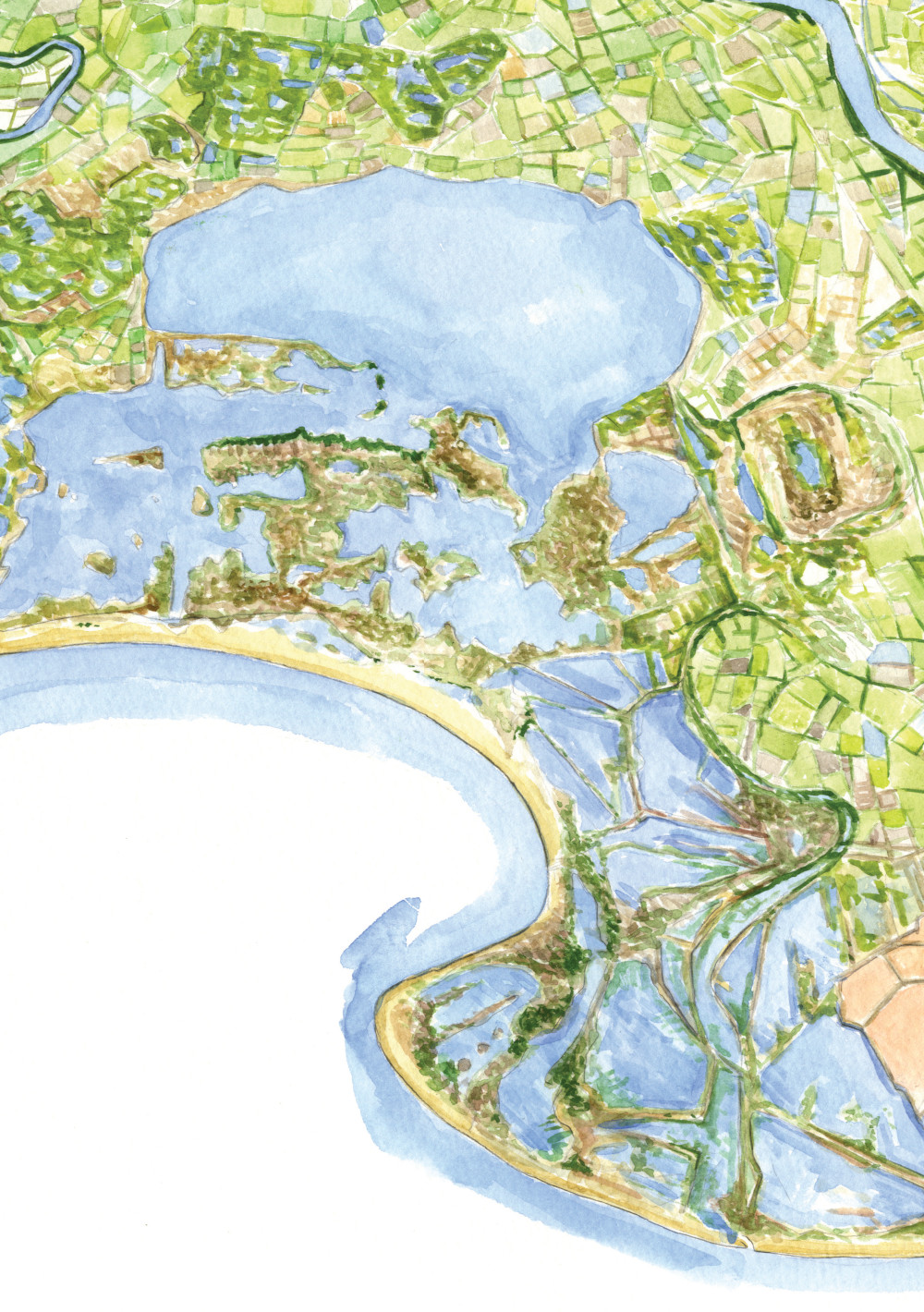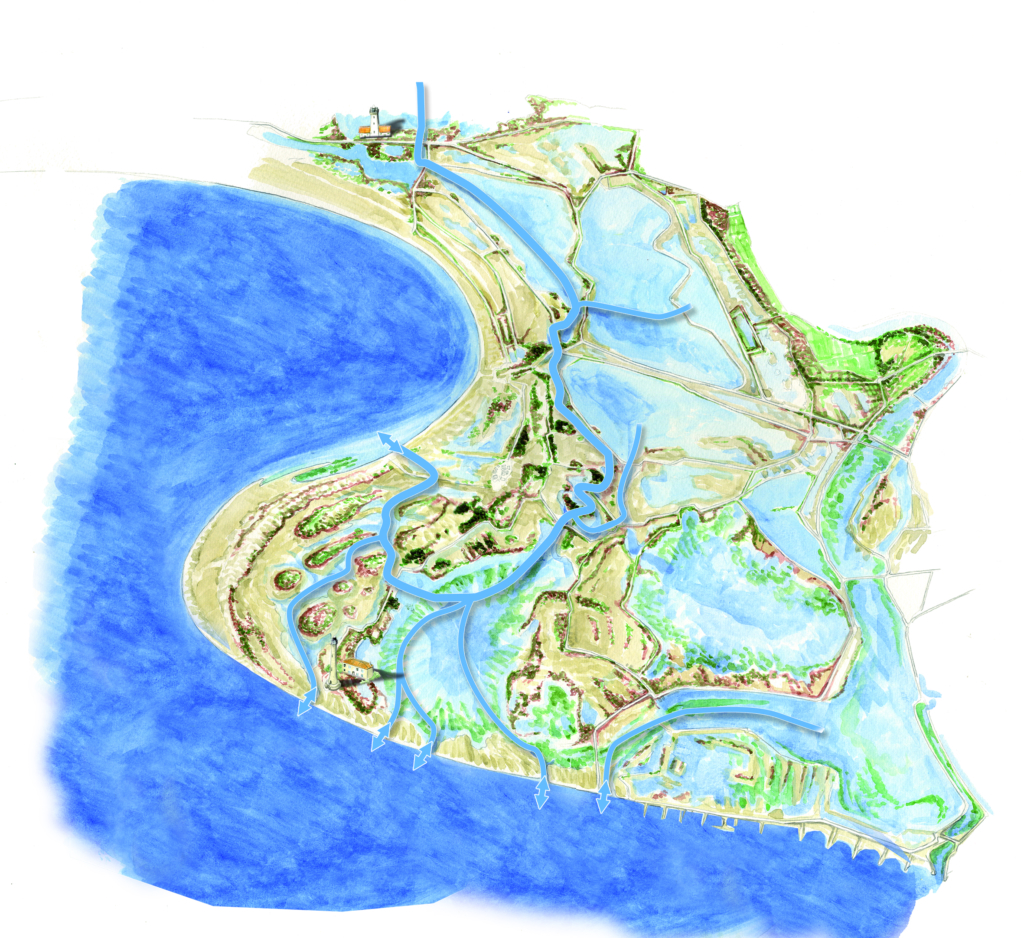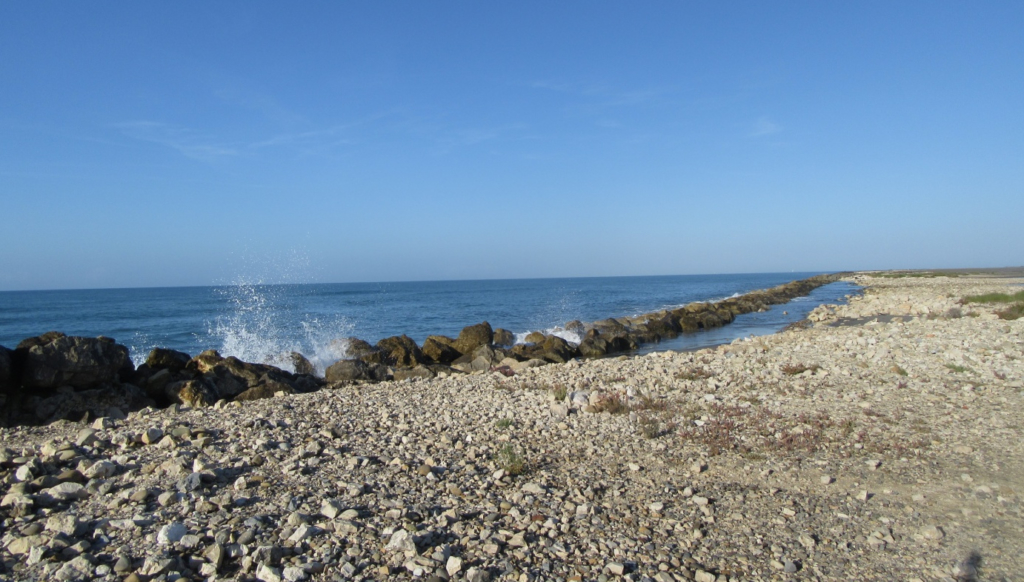The problem: climate change enhances coastal risks
Climate change is causing extreme weather events such as droughts, flooding, heat waves, and cyclones. The society and the environment are suffering as a consequence of the damage to nature around the world. The Mediterranean region is especially threatened, with an average sea level expected to rise to 1 m by 2100. In the Camargue, rising sea levels could eat away at the coastline and cause widespread flooding. But there are steps we can take to prevent the damages or live with the changes.
What are Nature-based solutions?
The Nature-Based Solution (NbS) concept searches for ways to work with ecosystems rather than relying only on conventional engineering solutions such as dikes or walls. These measures help to mitigate climate change effects, while improving sustainable livelihoods and protecting natural ecosystems and biodiversity.

There is growing awareness around the world that nature can provide viable solutions. We can use the properties of natural systems in engineering projects on their own or combine them with conventional structures like dikes and walls.
The European Union (through its Horizon 2020 research and innovation programme) and countries in the Mediterranean basin are introducing Nature-Based Solutions in their public policies as innovative strategies for sustainable development.
Benefits of Nature-based solutions to people and the environment
Traditional concrete-based structures (human-engineered infrastructure like dikes) are not always able to adapt and compensate for changes such as sea-level rise and require regular expensive maintenance and adjustments. These artificial structures have been shown to cause unwanted erosion in other locations and further damage ecosystems, often resulting in artificialized landscapes. The production of such structures is directly associated with the negative impacts of mining activities for material extraction and material transport.
NbS are an attractive alternative for natural hazard management control offering protection to the environment while improving biodiversity, food production and human wellbeing. Also, in many projects, NbS are less expensive for water authorities than traditional civil engineering methods.
Healthy wetlands such as seas, rivers and lakes provide areas to store and slow the flow of water during floods. These areas can help to steady flow rates, reduce flood peaks and lower the flood risks to towns and other infrastructure.
The Project: Restoration of Camargue’s Former Saltworks
The former saltworks are located in the Rhône delta, in the Camargue Natural Regional Park. This site represents a vast coastal area of more than 6,500 ha in the communes of Arles (Salin-de-Giraud) and Saintes-Maries-de-la-Mer. Previously developed for salt production, the site is characterized by a strong artificialization of the water cycle (the Rhône river is canalized and dikes are used for protection) and a disconnection of the lagoons that were used as compartments for salt concentration.
 |
 |
The western part of the Camargue (left) and the lagoons and marshes of the former Camargue saltworks showing the connections with the Mediterranean Sea (right) © Cyril Girard
You can watch below the movie in French “Étangs et marais des salins de Camargue, un territoire en mutation” (The lagoons and marshes of the former Camargue saltworks, a site being transformed).
The Conservatoire du Littoral (owner) in collaboration with the Camargue Natural Regional Park (coordinating manager), the Tour du Valat and the Société Nationale de Protection de la Nature (co-managers) initiated a nature restoration project in 2011. This site is progressively becoming a stunning, functional wild coastal wetland that reconnects with surrounding aquatic and terrestrial ecosystems within the Camargue Natural Park. It hosts important biodiversity and plays an important role as a buffer against flooding from the sea.
The adaptive management strategy
The creation of a buffer area contributes to a broader strategy (including dike adaptation and consolidation further inland) to mitigate flood risks. This buffer area together with the inland dike, contribute to protect the Camargue from marine submersion, creating a more sustainable and less costly alternative from an ecological and economic point of view than maintaining or rebuilding a seawall and other coastal defence-related infrastructures along the coastline.
 [1]
[1]As the site is adjacent to a large wetland complex including the National Nature Reserve of Camargue, this restoration project has set crucial management objectives to improve the connectivity between the lagoons and the sea. In particular, the restoration is based on reconnecting natural water flows (that diminishes the salt concentration) and allows spontaneous colonization by wildlife.
Some positive results already visible in the Camargue
The former saltworks restoration project is an example of how humans can help reverse a disturbance through adaptive restoration until nature can regain its functionality and restore its resilience. In this case, reconnecting water bodies leads to the eventual reshaping of water paths in a natural way (e.g. after a few storms). Newly emerged soils and restored waterways produce “new” homes for vegetation, fish, birds and other wildlife populations. Fish migration is progressively restored. Abandonment of the sea-dike along the coastline leads to the restoration of sediment transfer, contributing to the restoration of natural sandy coastlines. Wetland reconnection and restoration considerably improve water spreading, thus mitigating the effects of sea surges. These coastal ecosystems become more resilient to better face the impacts of climate change.
From the economic point of view, the management strategy offers a less expensive option, with no cost related to coastal defense infrastructure construction along the coastline. Information from the Symadrem (Interregional Joint Union for the Development of Dikes in the Rhone Delta and the Sea) confirms that the restoration and maintenance of the seafront dike (including breakwaters and groins) would be much more expensive than the one inland.
The benefits of the restoration project for the society include:
- Enhanced flood protection further inland (creating a buffer zone),
- Development of fish nurseries (through increasing connectivity of water bodies and reducing salinity),
- New opportunities to improve scientific knowledge (research on coastal dynamics and biodiversity, and strategies to adapt to sea level rise),
- Increased prospects for environmental education (school and information visits), and
- Additional recreational activities (cycling, hiking, horse riding, etc.) both for locals and tourists.
The lagoons and marshes of the former Camargue saltworks will be the subject of a field trip by experts in January 2019, on the occasion of the international workshop “Implementation of Nature Based Solutions to tackle climate change: Focus on the Mediterranean region” (more details [2]).

The communication of this case study is supported by Wetlands International through a LIFE NGO funding from the European Union.
